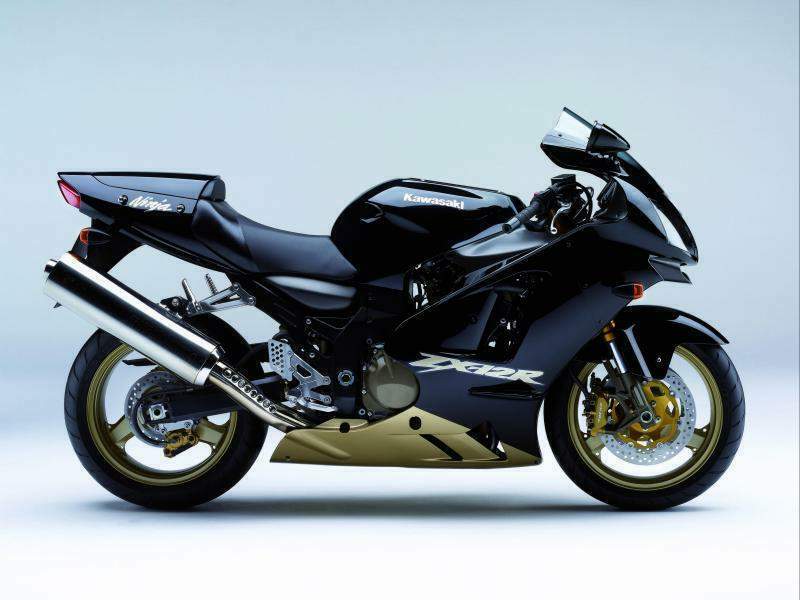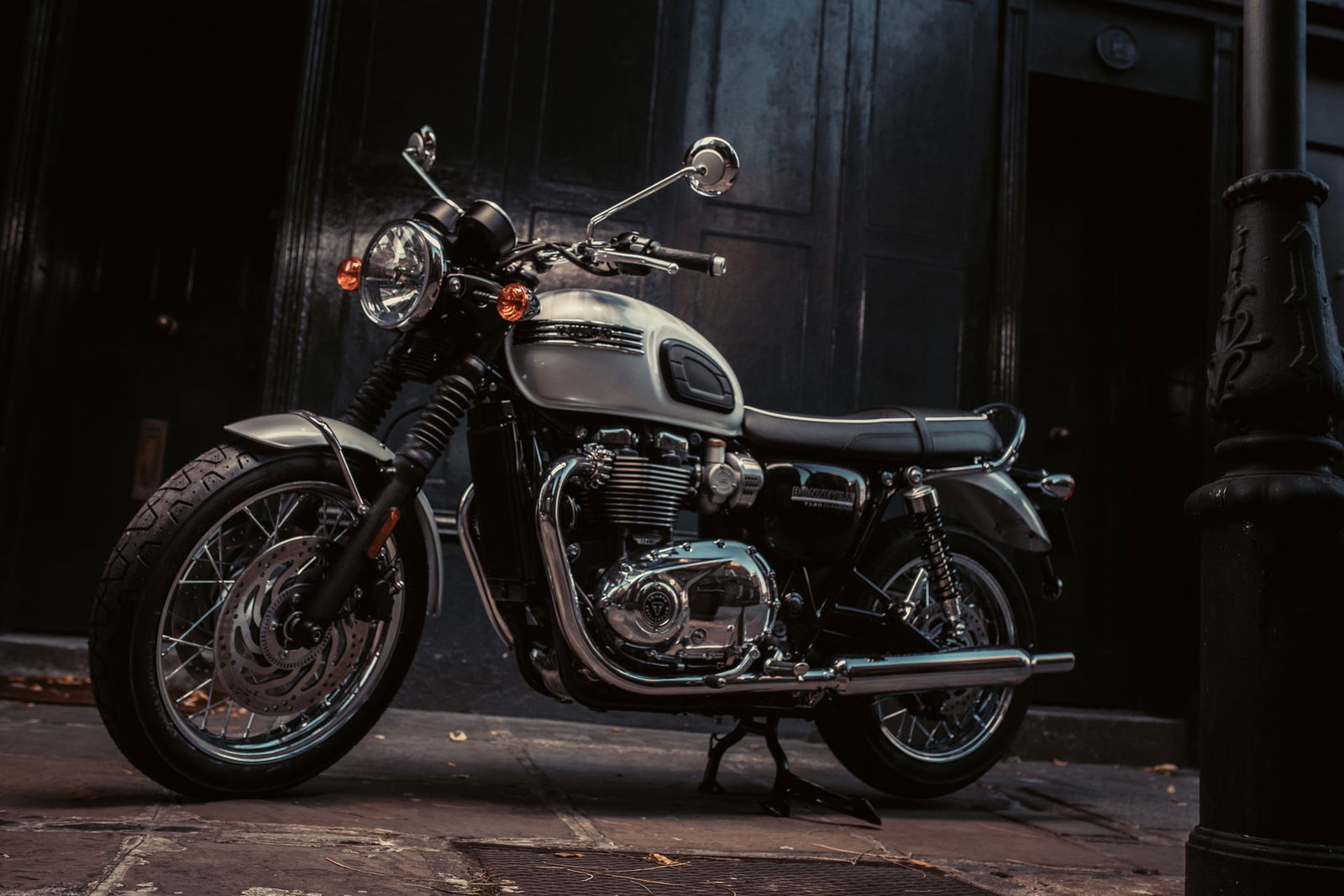Top 10 best Harley Davidson motorcycles of all time
Harley-Davidson may be a traditional motorcycle company with an old-fashioned image – but it’s also proved, time and time again, it’s capable of a big surprise.
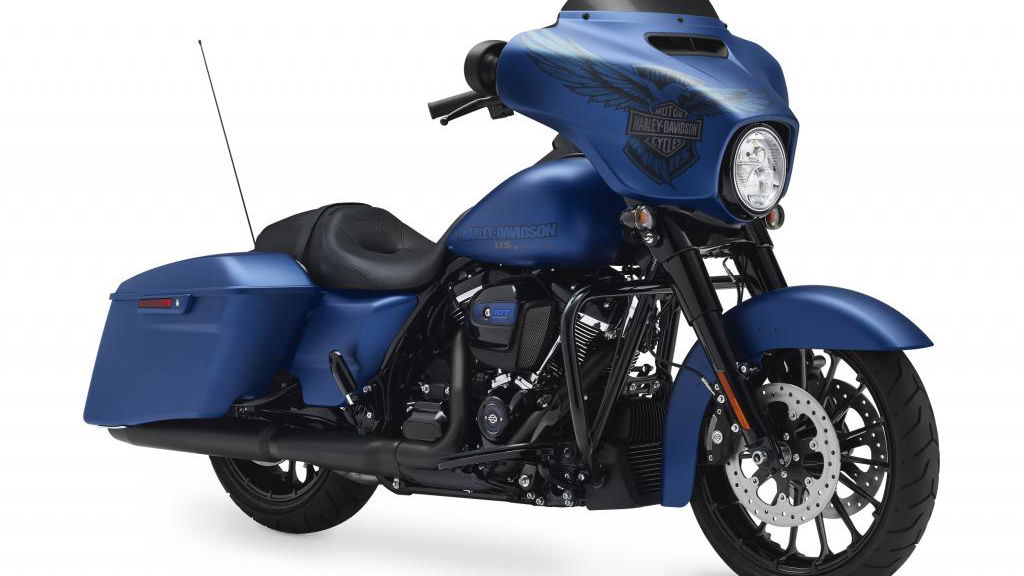
If you were to ask 10 random people to name a motorcycle brand, it’s a good bet that the name on at least nine people’s lips would be Harley-Davidson.
The Milwaukee, Wisconsin-based manufacturer is synonymous with motorcycling, especially among those who don’t ride, and its influence extends far beyond the subsections of motorcycling culture that were created around it.
For many people, Harley-Davidson is a lifestyle; it’s a way of thinking, a way of being. To own a Harley-Davidson, or even wear a shirt with the brand’s iconic bar-and-shield logo, is a statement about who they are, who they want to be, and how they want to be seen by others.
Critics of the brand like to paint it as one that lacks innovation. They see the company’s history as one long series of bikes that are all the same. But nothing could be further from the truth. In fact, the Harley-Davidson Motor Company has played an outsized role in what motorcycling is and can be. Here’s our selection of its 10 best and most iconic models, ranked chronologically.
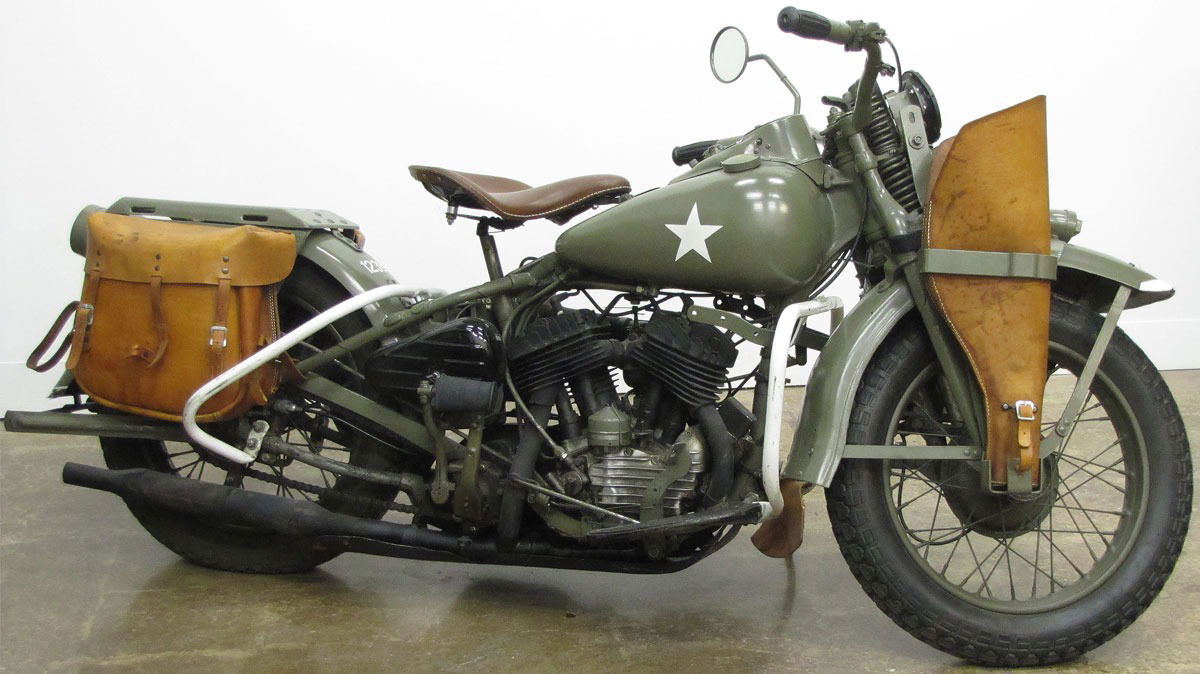
1940 WLA Liberator
Arguably, this is where the Harley mythos really began.
Harley-Davidson was founded in 1903, and by the time it produced the first WLA in 1940 it was a well-established global force in racing and leisure riding. Compared to some American rivals, it was also ahead of the game in terms of engine development. But the WLA helped to create the brand we know today.
Driven by a 740cc air-cooled side-valved V-twin that promised 25 horsepower, the WLA was developed for US military use in the run-up to American participation in the Second World War. Many were also sold to Western allies - the Canadian Army, in particular. From 1940 to 1945 tens of thousands were produced - in excess of 90,000 according to some estimates.
After the war, many of these bikes were decommissioned and sold to the public. They were more affordable than brand new motorbikes and became a favourite of returning servicemen. Many believe this is at the heart of why Harley-Davidsons are the de rigeur bike of so many American motorcycle clubs, such as the Hells Angels and Outlaws. And of course, the fashions and ‘free spirit’ mindset of those clubs are now intertwined with Harley culture.
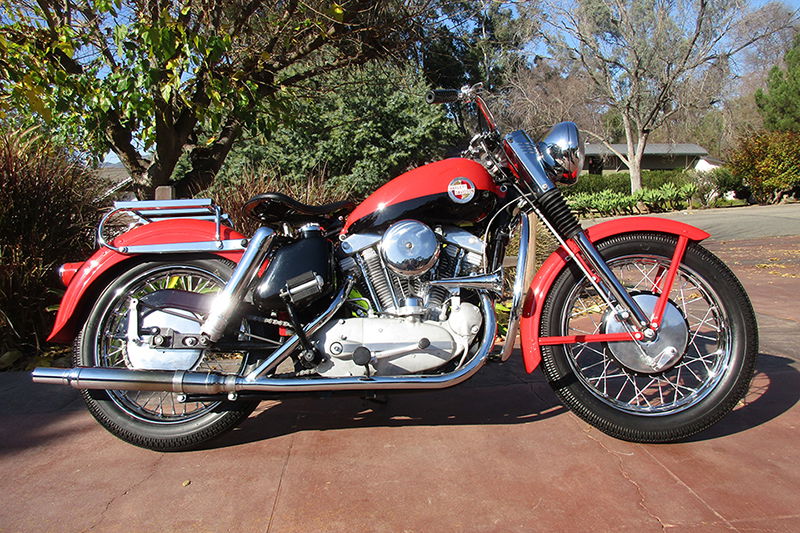
1957 XL Sportster
Like Triumph’s Bonneville, or Indian’s Scout, the Sportster is so integral to Harley-Davidson history and tradition that it is hard to imagine the brand without it. Through its many iterations, the Sportster is Harley’s longest-running and consistently best-selling model.
The roots of the Sportster began in the early 1950s when Harley was facing increased competition from British manufacturers like Triumph and Norton. This resulted in the Model K, which relied on an improved WLA engine and made a number of chassis advancements. In 1957, Harley created the Sportster by effectively placing an all-new engine in a Model K frame.
That engine was the iconic “Ironhead” OHV V-twin that Harley kept in production all the way to 1985. In 1986, the Sportster was updated to carry the all-new Evolution (or Evo) V-twin that it used for more than two decades. In 2021, the Sportster platform received yet another new engine: these days it is powered by the liquid-cooled Revolution Max V-twin.
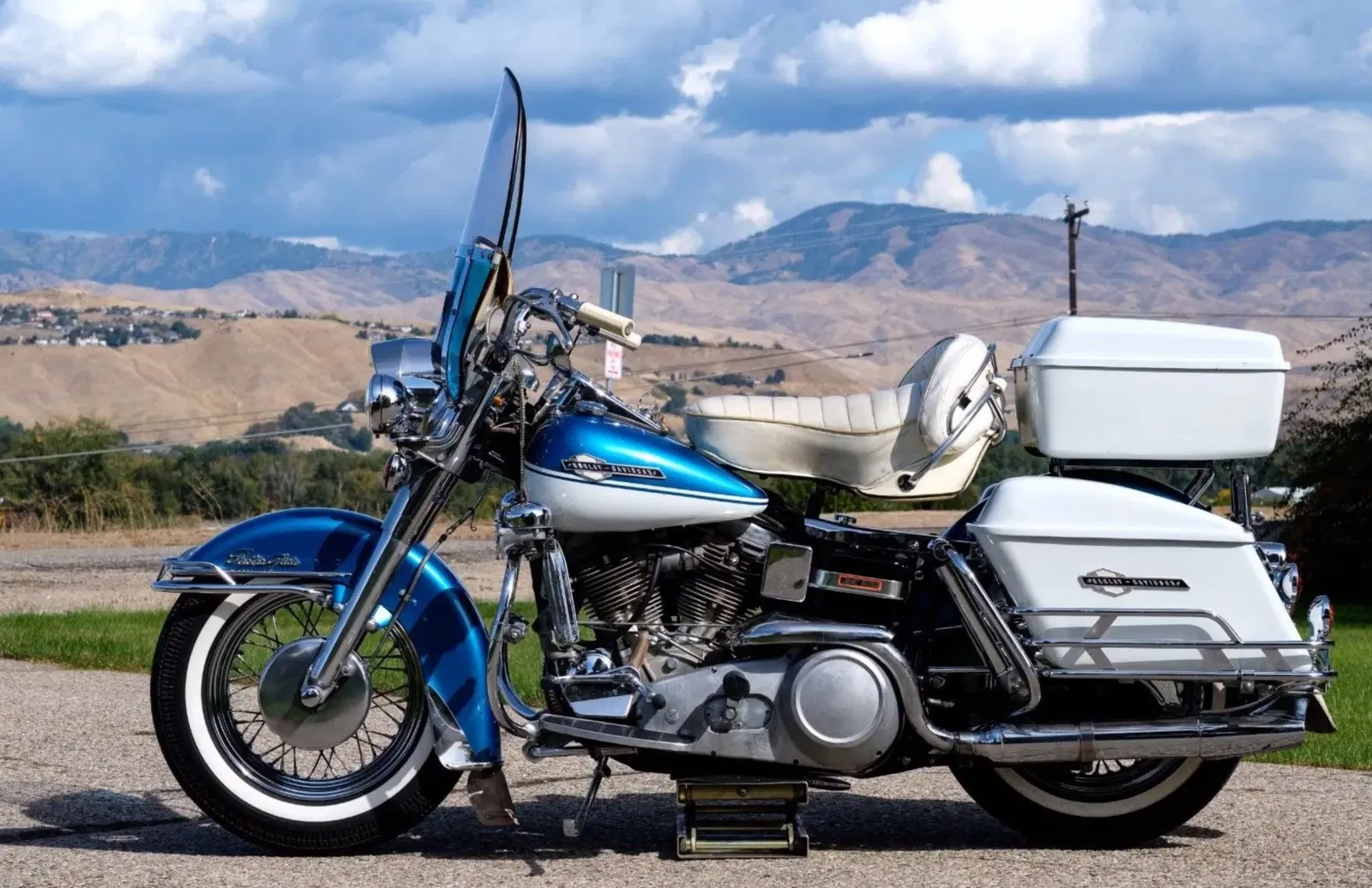
1965 FLH Electra Glide
By 1965, Harley’s main output was its Sportsters and “Panhead”-engined big-twin tourers. In that year, it updated the Duo Glide - which had been so named in 1958 for its rear swinging arm suspension - to create the first Electra Glide. In this case, the name pays tribute to the fact it was the first Harley-Davidson model with an electric starter.
The Electra Glide also got uprated 12-volt electrics and a larger fuel tank. More significant, though, was a new accessories package including hard panniers and touring screen - offered in response to the growing popularity of customers fitting out their bikes with aftermarket touring accessories.
In 1969 the screen was updated to the now iconic ‘Batwing’ fairing. In 1971, these became standard fitments. The “full-dress” tourer was born.
Since the introduction of the very similar Sport Glide (see below), the Electra Glide has popped in and out of Harley’s line-up, but this iconic machine never stays away for long.
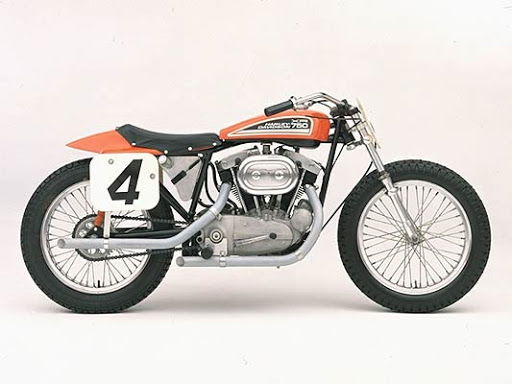
1970 XR750
Quite possibly the most successful factory racer ever, the XR750 effectively defined flattrack racing in the United States and reigned supreme for more than half a century.
Born in 1970 with the advent of the new AMA Racing equivalency formula, the XR750 was created using a Sportster-based engine. It utilised modified cast-iron heads and cylinders, a magneto instead of a generator, and improved oiling.
In 1972, a new, more powerful all-aluminium alloy XR750 engine was introduced. The perfected machine dominated flat track racing for decades to come. Between 1972 and 2008, the XR750 would go on to win 28 of 37 AMA Grand National Championships. The XR750 racked up more wins than any other motorcycle in AMA racing history.
Just as impressively, the road race version, the XR-TT, dominated the 1972 Transatlantic Trophy in the hands of Cal Rayborn and the XR also became the bike of choice for bike jump legend Evel Knievel.
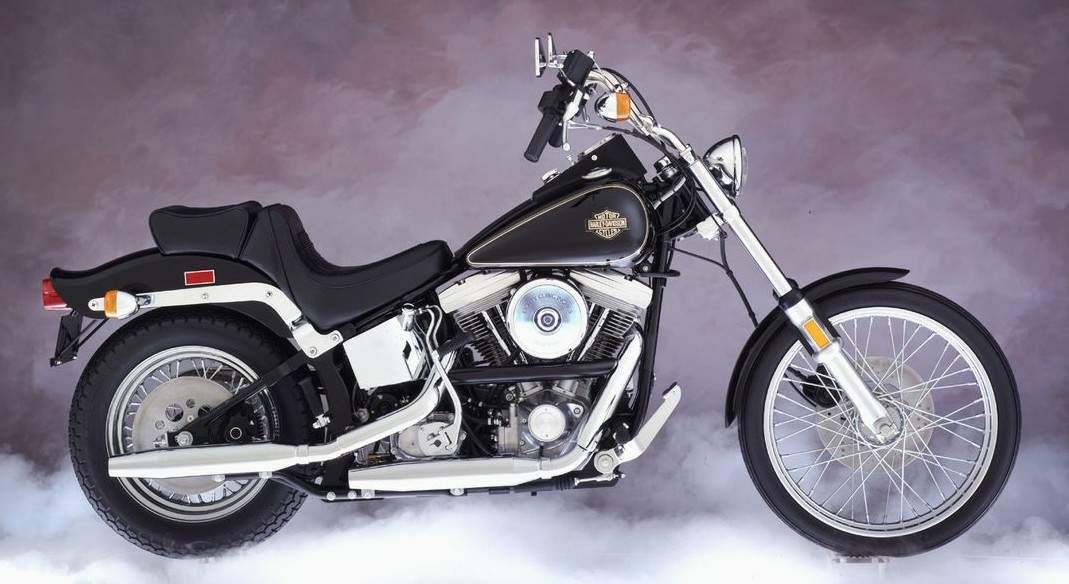
1984 FXST Softail
The early 1980s were a turbulent time for Harley-Davidson. The 1970s, under controversial AMF ownership, had been an era of under-investment and decline. Harley’s US market share, in the face of ever-increasing competition from Japan, had fallen from 75 per cent to just 25 per cent. Almost all the bad things you hear about Harleys - that they leak oil, for example - are born of the AMF era.
In 1981, CEO Vaughn Beals persuaded 12 other directors to join him in a management buyout and promptly set about re-invigorating the company. In Harley lore, this was the company’s “Avengers Assemble!” moment, when the brand - beaten and bruised - came back swinging.
One of the first developments was the founding of the Harley Owners Group (HOG) in 1983 - today the world’s largest factory-sponsored motorcycle group. Even more important was its first all-new bike. The 1984 FXST Softail not only introduced the all-new, alloy Evolution engine - which was vastly more reliable and potent than the old “Shovelhead" - but also showcased Harley’s new “hidden shock” Softail chassis. This gave its cruisers an even more authentic, hardtail-style look.
It was a huge success, too, instantly becoming a Harley best-seller, also leading to the crucial 1950s retro-styled Heritage Softail in 1986 and completely reversing Harley’s decline.
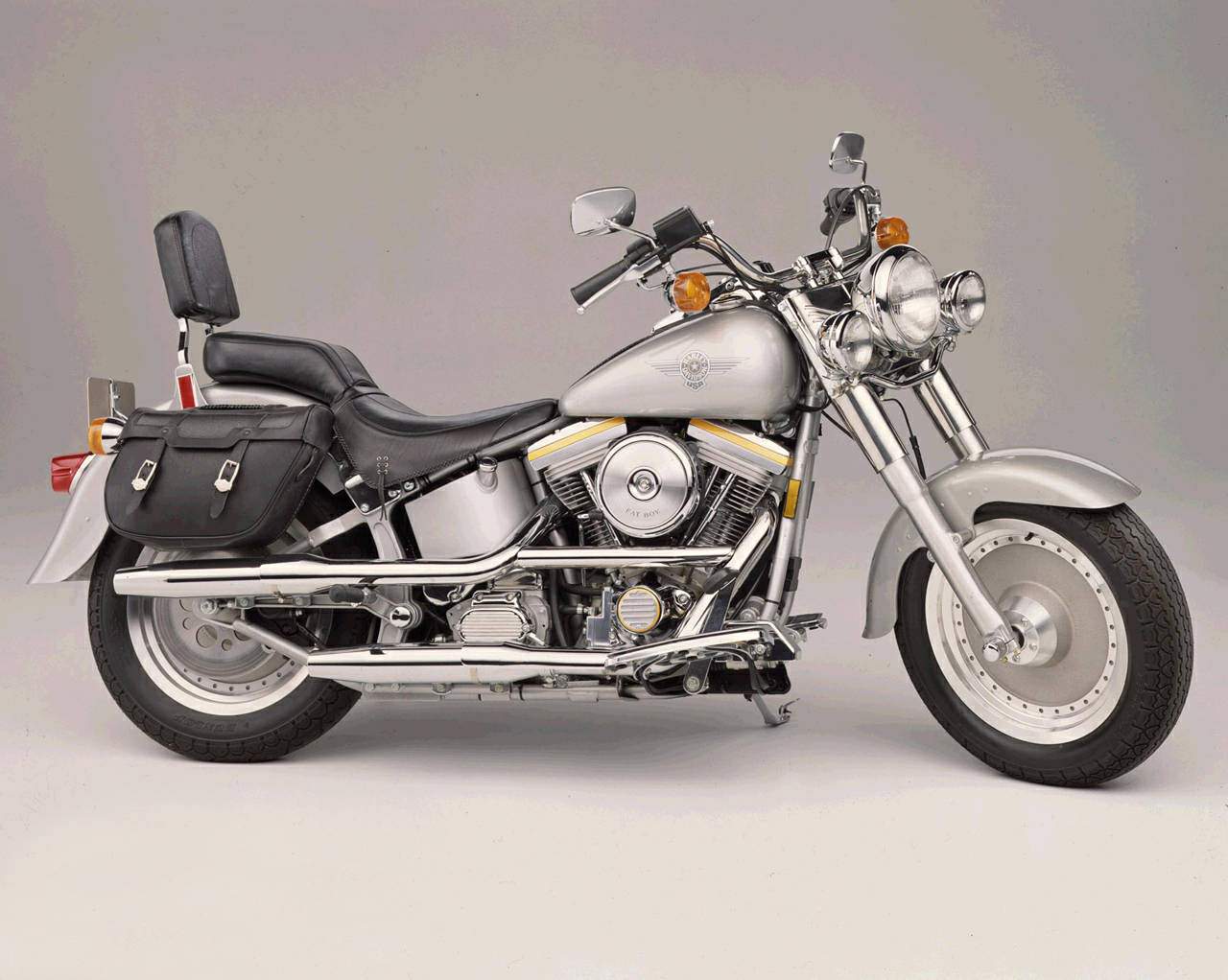
1990 FLSTF Fat Boy
Following the successful introduction of the Evolution engine and Softail chassis, and huge popularity of the 1950s styling of the 1986 Heritage Softail, Harley design chief Willie G. Davidson decided to explore minimalist, industrial, retro ‘50s style even further.
Working with co-designer Louie Netz and starting with a Heritage Softail as base, the duo replaced that bike’s fancy conchos, studs, chrome, wire wheels and whitewall tires with a design that was ultra-clean and simple with bold, plain styling.
Honed over two road trips to Daytona Bike Week (a large, annual motorcycle rally in Daytona, Florida) to gauge public reaction, the bike was eventually named the Fat Boy - very much continuing a strange Harley tradition of inadvertently giving bikes names that sound like brands of condom.
Launched in 1990, it was a huge success, thanks in no small part to its star turn in the 1991 blockbuster movie Terminator 2. It remains one of Harley-Davidson’s most popular models and is still in the lineup to this day.
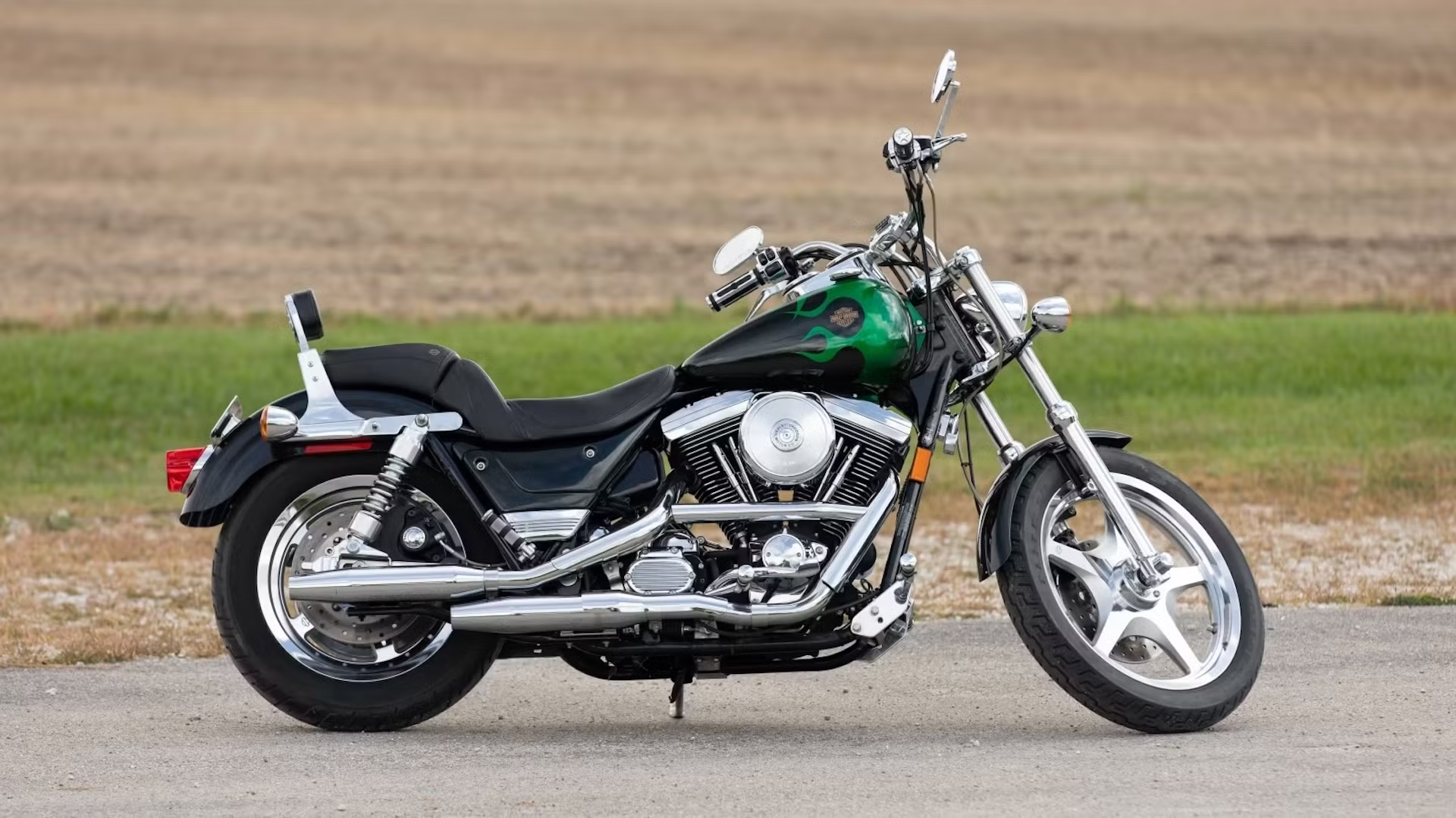
1999 FXR2 and FXR3
Harley-Davidson launched the FXR model in 1982. The first Harley to feature a rubber-mounted engine, the FXR platform quickly gained a reputation as one of the best-handling in the company’s history. Nonetheless, it was quietly shelved in 1995 - replaced by bikes with the Dyna chassis.
In 1999, however, Harley chose to resurrect the FXR in the form of the FXR2 and FXR3. What made these so special was the fact that they were the first to be produced by Harley-Davidson’s Custom Vehicle Operations (CVO) programme.
The program was initially created as a way for Harley to produce ”a limited number of high-end custom niche vehicles, as some of our competitors have been doing,” according to Jeff Merten, the then-director of marketing for parts and accessories. In other words, it was a corporate attempt to cash in on the custom-building scene.
A handful of brands have attempted to copy this tactic, including Triumph with its TFC programme. It’s easy to see these schemes as little more than a cash grab, but over the years, Harley’s CVO programme has become more than just bling.
These days, it is the test bed of new products and technologies. Whether it’s software, hardware, or a capacity boost, you’ll usually find it on a CVO long before it arrives on the rest of the Harley line-up.
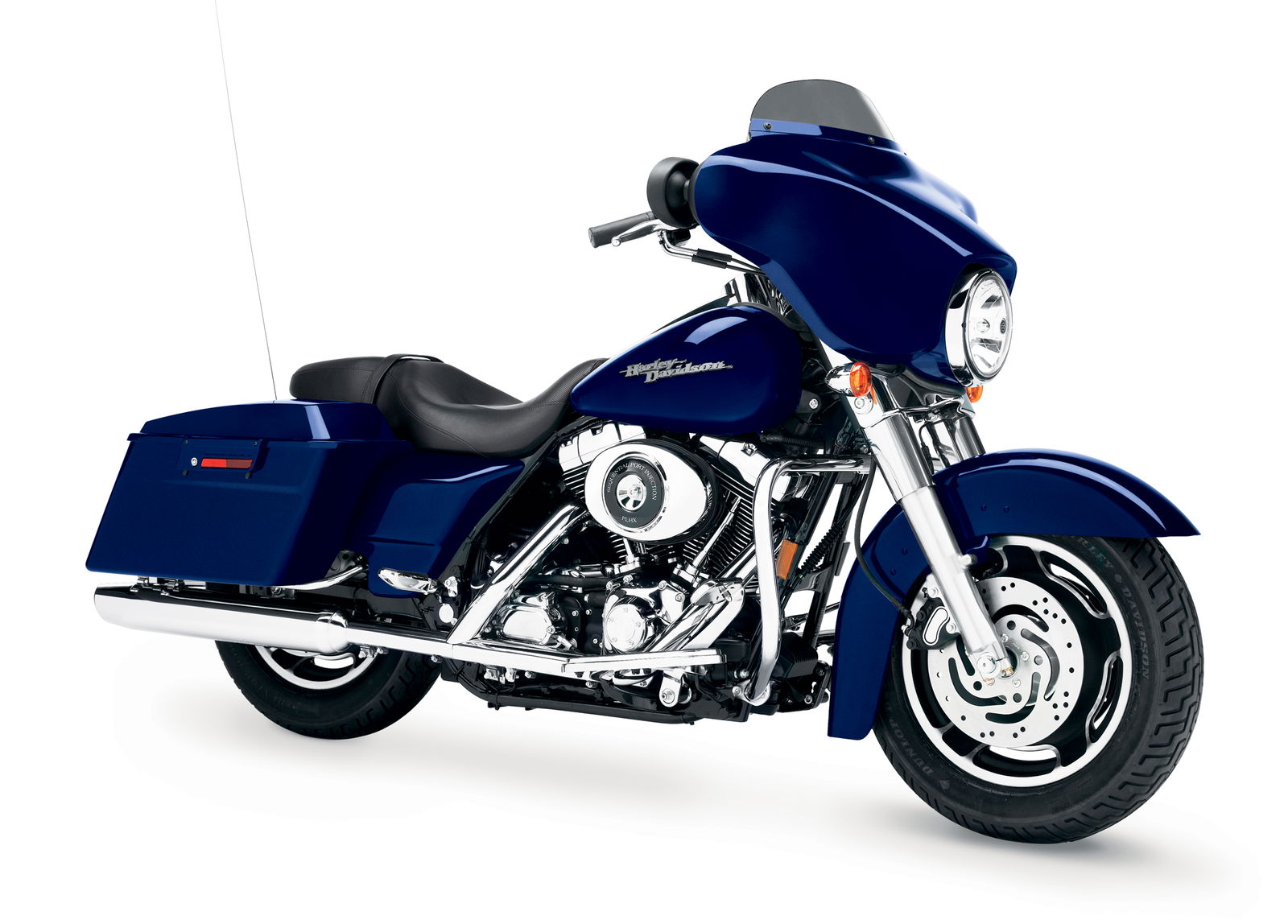
2006 FLHX Street Glide
It may be hard to remember it now, but when the Street Glide first appeared in 2006 it was dismissed by many (particularly in the UK) as a pointlessly chopped down and less practical Electra Glide.
They were wrong. So, so wrong. The Street Glide was basically the world’s first production bagger, helping create an entirely new category of motorcycle - one that has even, improbably, stretched into the world of MotoGP.
Offering a combination of Harley’s two strengths - bad-ass looks and the ability to cover huge distances - the Street Glide is also one of Harley’s all-time best-selling models. By a very wide margin. For example, when the second-generation version was introduced in 2012 it was not only Harley’s best-selling bike in the United States, but allegedly out-sold all imports into the US COMBINED.
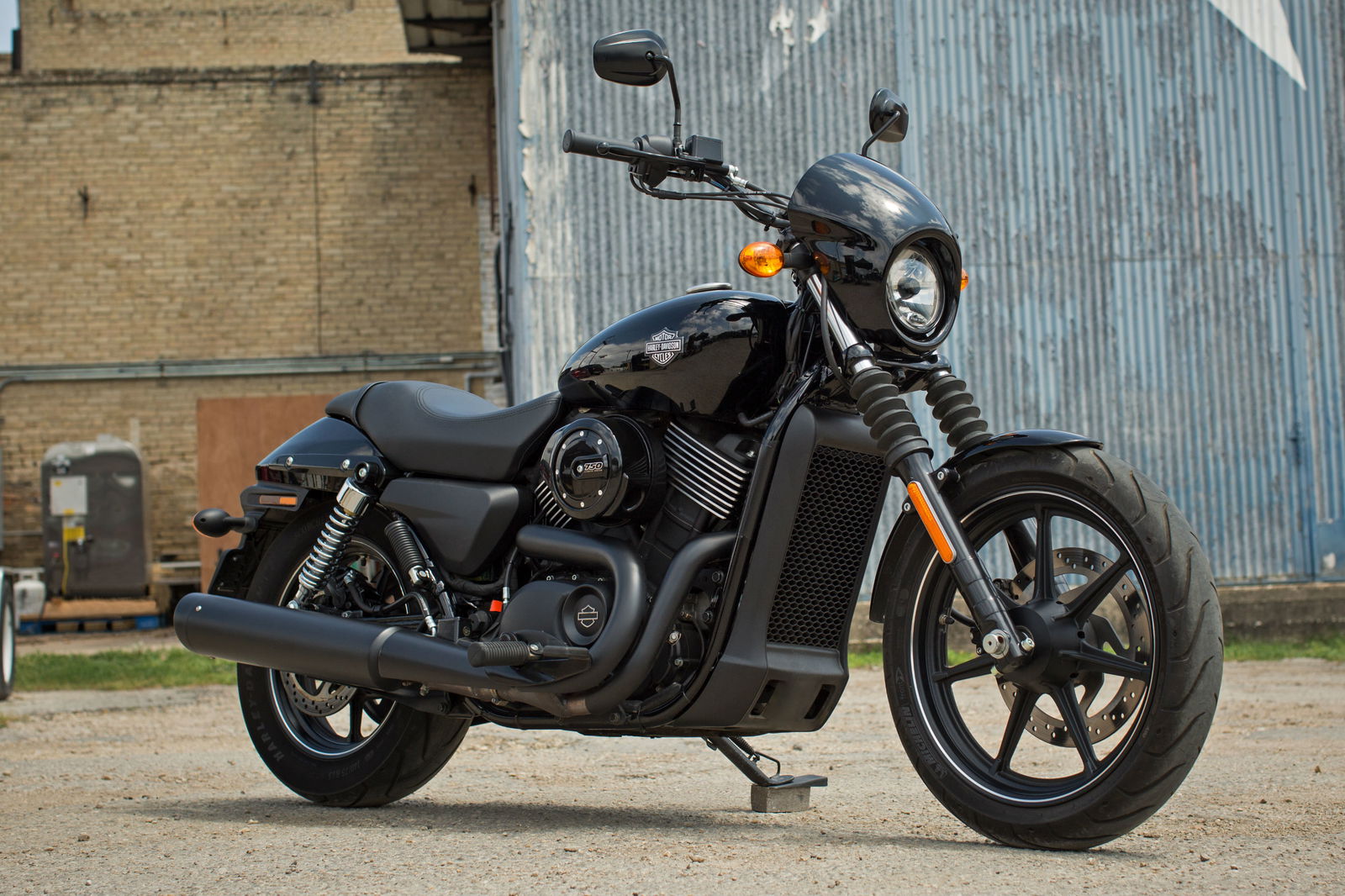
2014 XG Street
By most metrics, Harley-Davidson’s XG platform - which included the Street 500, Street 750 and Street Rod 750 - was a flop. Ostensibly pitched against bikes like the Yamaha MT-07, it was heavier, less agile, and more expensive than the competition, while also lacking the refinement that Harley-Davidson owners had come to expect. Yet, the bike earns a spot on this list because of what it represented and what it led to.
Since as far back as the 1980s, Harley-Davidson has struggled to shake off the characterisation of being a brand for men going through a mid-life crisis, or, worse, male retirees trying to recapture their youth. Sure, those demographics are more affluent, but a brand needs new blood if it’s going to survive.
The XG platform was designed to bring that new blood in. Driven by a new, liquid-cooled Revolution X engine - a variation of the Revolution engine that had powered the ‘not on this list but still iconic’ VRSCA V-Rod of the early 2000s - the XG bikes boasted greater horsepower than their air-cooled Sportster equivalents, while being (marginally) lighter and more affordable.
On paper, it was a great idea: a faster Harley that younger riders could actually afford! But in application, the XG was a disaster. The reason for the bikes’ affordability was obvious in design and fixtures. They looked and felt cheap.
And, controversially, outside of the US market, the bikes were not made in the United States. Being American-made had (and, in most cases, continues to be) a key selling point of Harley-Davidson motorcycles.
Harley doesn’t even talk about the XG platform these days; they’d probably like us to pretend it never happened. Nonetheless, it was a (stumbling) step forward that ultimately led to other outside-the-box thinking, including the LiveWire (see below), the RA Pan America platform, and the Revolution Max-powered Sportster.
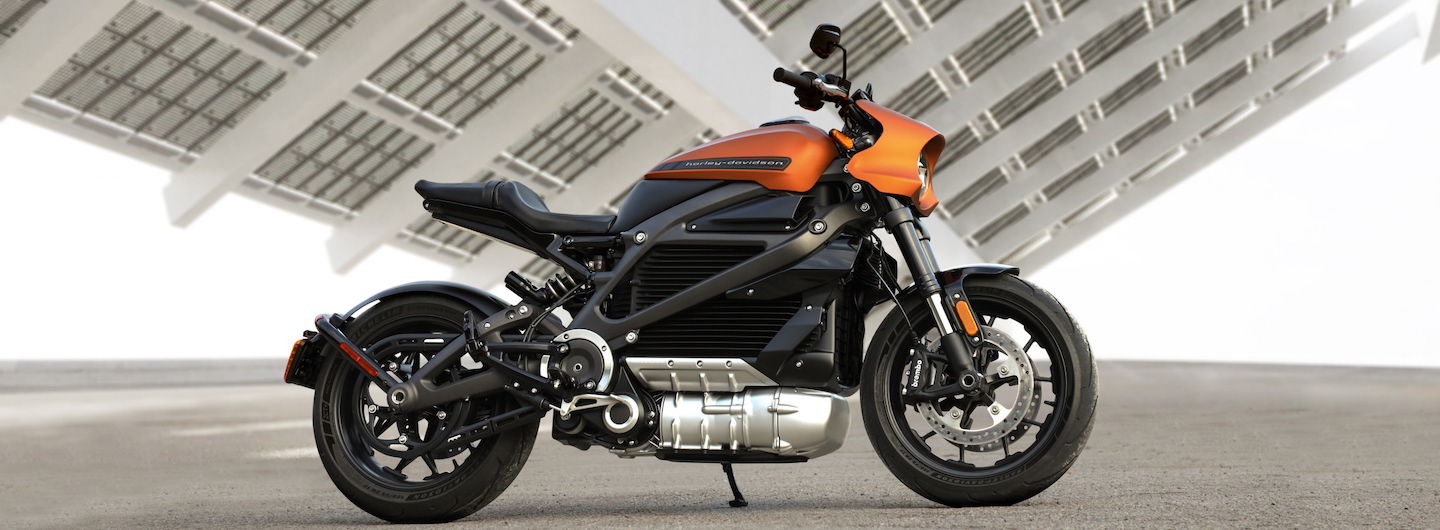
2019 LW Livewire
In terms of sales, the LiveWire was also a flop, but in this particular correspondent’s humble opinion, it was one of the best pure motorcycles ever made - not just by Harley-Davidson, but anyone.
That’s a bold claim, but the LiveWire was a bold machine. After years of “will they, won’t they” teasing, the LiveWire was finally released in 2019, earning it the distinction of being the first electric motorcycle to be offered by a major brand.
It looked fantastic and was a joy to ride, but range was relatively limited and the asking price astronomical. Even today, £30,000 is a salty, salty proposition; in 2019 it was flat-out prohibitive. Most people liked the bikes - some of us loved them - but very few actually bought one.
Eventually the model was spun out to become its own brand, allowing Harley-Davidson to distance itself from the product. As of this writing, the LiveWire brand still exists but is haemorrhaging money - reportedly selling less than 100 bikes a year.
It is an ignominious end to an excellent machine. One day, in the far-flung future, we’ll be zipping around on fantastic electric Hondas and Triumphs and Ducatis, and Harley-Davidson will be able to claim the minor victory of knowing that it was the first big company to take the leap.
